How to Create an App Like Netflix in 9 Simplified Steps (With Experts’ Insights)
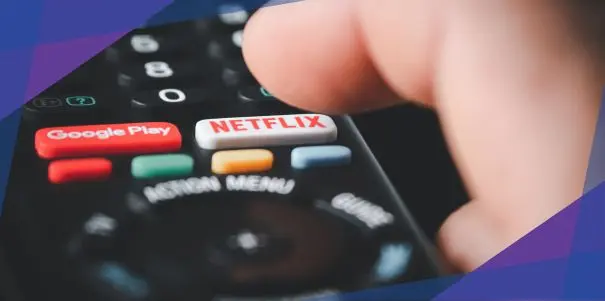
Any guess how many minutes a day an average user in the US spends on Netflix?
In 2024, users in the US spend 62.1 minutes per day. This shows that users are actually inclined to consume more videos through a streaming service app like Netflix.
If you’re planning to launch your own video streaming app, then carry on and I’ll walk you through the app development process.
In this article, I’ll unpack the simplified yet replicable steps—from app ideation to launch—to ensure you’re building your Netflix-like app for success. With a team of trusted app developers and product strategists on your side, you can make the impossible possible.
How to develop a video streaming app like Netflix—simplified steps
- Conduct market research and validate your streaming app idea
- Choose your content strategy for sustainable growth
- Select a monetization model based on your target audience and content strategy
- Launch quickly with essential MVP features for maximum impact
- Build an intuitive user experience with baseline traits
- Pick the right platform to maximize your reach
- Design intuitively for user engagement and satisfaction
- Develop with agility for a high-performance streaming app
- Launch, promote, and enhance your streaming app
1. Conduct market research and validate your streaming app idea
Before developing a video streaming app, conduct thorough market research and validate your app idea. Understanding the video streaming app requirements is crucial to ensure optimal performance and user experience. This will help you figure out if it is product-market fit to avoid wasting your time, efforts, and energy.
I found this Canva template to help you jumpstart your research and develop your presentation deck.
Blue and White Modern Market Research Presentation
Why is market research important? Even if you have the greatest app idea that could compete with Netflix and other entertainment apps, you must know if you can fill the gaps as a new entrant in the streaming market.
The available data will guide you on where to position yourself and where to go. Let’s crunch some numbers quickly.
- 📣 The global video streaming market size was valued at $555.89 billion in 2023 and is expected to reach $2.661 trillion by 2032, growing at a CAGR of 18.7% during the forecasted period. This rapid growth presents opportunities for new streaming platforms to enter the market.
- 📣 To succeed, identify your target audience and their preferences. For instance, if you’re targeting millennials, you should know that 74% of millennials prefer entertainment streaming services over traditional TV.
- 📣 You must also analyze existing video streaming platforms like Netflix to understand their strengths and weaknesses. The Netflix app boasts 277.65 million subscribers globally as of Q2 2024, setting a high bar for new entrants.
Make sure you also think about your unique selling proposition (USP). For instance, you could have specialized content, superior user experience, or competitive pricing. Most importantly, you need to ask yourself: What is the problem you’re trying to solve if you’re going to develop an app like Netflix?
Our CEO and co-founder, Michael MacRae says:
![]()
Successful apps offer a solution to common problems. In other words, they give their target audience undeniable value in one shape or form. Rarely, prospective users will actively discover or download an app that doesn’t directly help or assist them with a specific problem. Think about it. If no problem is being constantly solved or improved, why would the user keep using your app?
![]()
You can read more about his thoughts on how to build successful apps for more insightful advice.
Find Your Niche
Finding your niche involves identifying the type of content you want to stream. This can include movies, TV shows, documentaries, original content, or a combination of these. Choosing a niche that you’re passionate about and has a demand in the market is essential. Conducting market research and analyzing your competitors can help you identify gaps in the market and opportunities to differentiate your app.
Some popular niches in the video streaming market include:
- ✅ Live sports streaming. Catering to sports enthusiasts who want to watch live games and events.
- ✅ Music streaming. Offering a platform for music videos, concerts, and exclusive artist content.
- ✅ Educational content streaming. Providing access to educational videos, courses, and tutorials.
- ✅ Gaming streaming. Targeting gamers with live streams of gameplay, tutorials, and eSports events.
By identifying your niche and target audience, you can create a video streaming app that caters to their specific needs and preferences, increasing user engagement and retention. This focused approach will help you build a strong brand identity and stand out in the competitive video streaming industry.
2. Choose your content strategy for sustainable growth
Choosing your content strategy is crucial when building a streaming app like Netflix. Selecting the right video streaming service model, such as subscription-based access or pay-per-view, can significantly impact your platform’s monetization and user attraction. This decision shapes your app’s unique appeal, ability to attract and retain users, and success in the market.
There are three strategies you can do:
| Content Strategy | Pros | Cons |
|---|---|---|
| Original Content |
|
|
| Licensed Content |
|
|
| Balanced Approach |
|
|
- ✅ Original content. Creating original content sets your platform apart. This strategy fuels subscriber growth, as 71% of users consider canceling services without new, engaging content. “Stranger Things” Season 4 exemplified this with 1.35 billion viewing hours in just 28 days.
- ✅ Licensed content. Licensing content remains vital. These are TV shows, movies, or other content that your platform doesn’t own but has permission to stream for a limited time from other studios. For instance, despite Netflix’s original content surge, licensed shows still captivated audiences, accounting for 45% of total viewing hours. The sitcom “Suits” broke records with 3.14 billion minutes viewed in a week.
- ✅ Balanced approach. Successful platforms blend originals with licensed content. In 2023, Netflix’s library was 55% original and 45% licensed. Again, this goes to show that even a video-streaming mammoth like Netflix knows it’s important to adopt both strategies.
Why does content strategy matter?
Your content strategy choice differentiates your service. Disney+ harnessed its family-friendly focus and reached 153.6 million subscribers in Q2 2024 with its balanced approach.

Source: Disney Plus
My point is that content costs are significant, requiring strategic financial planning if you want to create your original content. Content type dictates technical needs, such as live streaming versus on-demand—will you focus on originals or licensing? Or both?
Most importantly, engaging content drives user acquisition and app retention, with 48% of viewers citing it as their main reason for subscribing to a specific program.
3. Select a monetization model based on your target audience and content strategy
Choosing the right monetization model is integral to crafting a live-streaming app that’s successful. Video streaming app development involves a well-planned strategy, selecting the right technology stack, and assembling an expert team to ensure successful app creation. It’s the thread that weaves through your revenue, user experience, and overarching business strategy.
When I interviewed our product manager, Brian Wong, he shared interesting insights on how to approach monetization strategy:
![]()
Monetization really depends on the type of business. Sometimes, subscriptions work; they are generally the preferred monetization model. However, that’s not always the case because there are so many options. You can use ads, commission-based models, or one-time payments. The key is to creatively make money without the user even realizing it.
Ideally, you should conduct market research to understand your users, their thresholds, and what your competitors are charging, whether directly or indirectly. Then, you need to find that sweet spot that will make a user convert and pay.
The way I see it, your monetization strategy boils down to your target audience and content strategy.
Here are some that you can consider when building a Netflix-like app:
| Monetization Model | Pros | Cons |
|---|---|---|
| Subscription-Based (SVOD) | Steady revenue stream Builds loyal audiences Predictable income | Requires constant content updates Potential subscriber churn High competition |
| Ad-Supported Free Tier | Wide audience reach No direct cost to users Increasing acceptability of ads | Requires subtle integration Potentially annoying to users Revenue depends on ad rates |
| Pay-Per-View (TVOD) | High margins on User control and flexibility No long-term commitment | Irregular revenue stream Limited audience size High marketing effort required |
| Freemium with Premium Features | Attracts hesitant users Opportunity for upsells Combines free and paid content | Conversion can be challenging Balancing free and premium offerings Risk of low engagement |
1. Subscription-Based (SVOD): Creates a constant revenue stream

Source: Netflix
This model offers boundless access for a regular fee. Netflix, a titan in this realm, boasts 277.65 million subscribers. Subscription models build a stable revenue stream and cultivate loyal audiences, forming the backbone of many streaming giants.
2. Ad-supported free tier: Requires subtle ways to incorporate natively

Source: Tubi
Here, users enjoy free content peppered with advertisements like Tubi.
Ads are becoming more palatable, with a considerable portion of viewers accepting them as part of their viewing ritual. This shift is evident in the $30.10 billion that brands funneled into streaming ads in 2024, signaling a gradual shift from traditional TV. By 2025, over half of Americans are expected to be tuning into at least one ad-supported service.
3. Pay-Per-View (TVOD): Gives users more control and flexibility
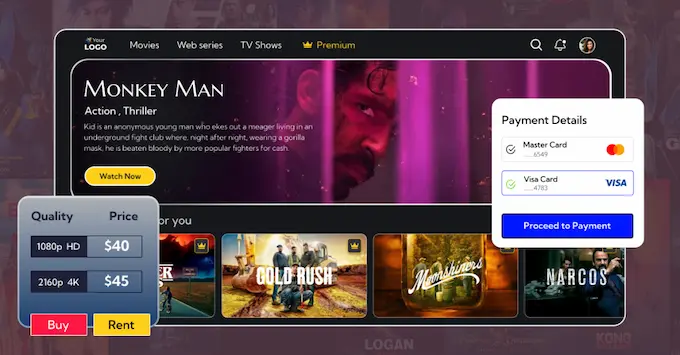
Source: Contus
This model allows users to pay only for what they watch, offering a la carte viewing. It caters to those who shy away from subscriptions, yet it can yield higher margins on premium releases or live events. Its key selling point is the flexibility and choice it delivers, making it an attractive option for viewers who prefer control over their content consumption.
4. Freemium with premium features: Lets users enjoy the best of both worlds but with a paywall
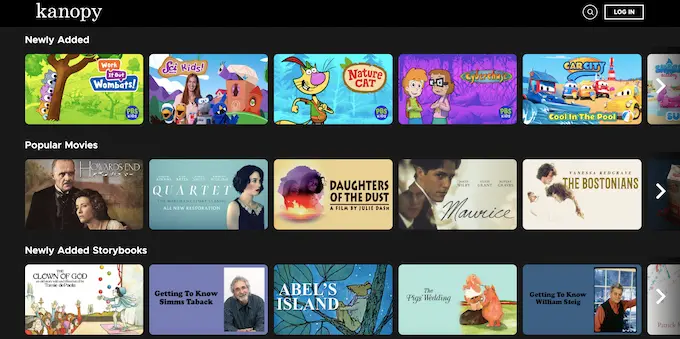
Source: Kanopy
This model offers basic access for free and charges for premium perks, enticing cautious users by giving them a taste before they commit financially. It can potentially convert a segment of free users into paying clientele.
So, how do you know which model is ideal for your app?
![]()
Here’s my take: Your monetization should resonate with your content. A niche library might thrive under subscriptions, while broad appeal could benefit from ads. Meanwhile, different models lure distinct audiences—ad-supported for the budget-conscious and subscriptions for the uninterrupted seekers.
If you ask me, I still prefer to pay a premium for Netflix because of the convenience of accessing movies and programs that I want to watch—without the ads and paywalls.
Now, after defining your concept, content strategy, and monetization model, the essential features become the heart of your user experience, determining how your audience engages with your creation. This brings me to my next point.
4. Launch quickly with essential MVP features for maximum impact
Planning your live streaming app’s essential features is like setting the scene for a blockbuster performance. Developing a video streaming application requires a robust technical foundation and user-friendly functionalities to compete with established platforms like Netflix.
At the core of this journey is the concept of a Minimum Viable Product (MVP). The MVP is your app’s debut performance—its role is to enable a swift launch, offering a stripped-down version of your full vision that retains the essence, inviting immediate user interaction. This approach allows you to gather crucial feedback and refine your offering iteratively.
Having a product roadmap with your MVP features will give you clarity on the scope and how to prioritize product features in your Netflix-like app.
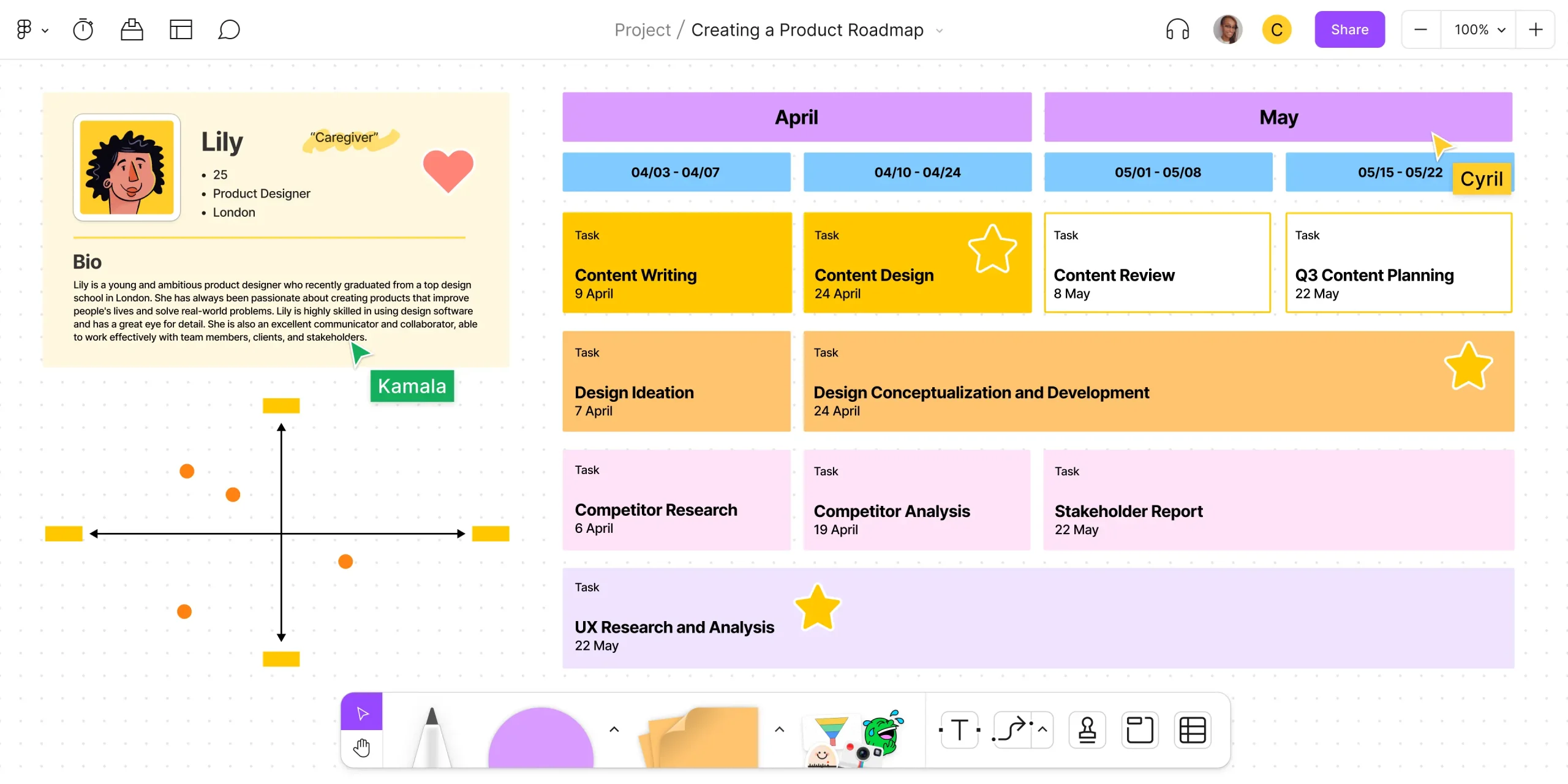
Source: Figma
Our product manager, Brian Wong, emphasizes such importance and how to get started:
![]()
You have to define clear objectives and be able to prioritize features. When developing user stories and your roadmap in general, you need to identify any dependencies that might exist. That’s how you would plan your features. You also need to collaborate with all stakeholders—designers, clients, and engineers—to figure out what’s actually needed.
Here are some of the MVP app features:
- ✅ User registration and profile management. The world is craving personalization, with 35% of consumers desiring tailored experiences. In 2013, Netflix unveiled Profiles, a feature allowing up to five unique user experiences within a single subscription—without extra cost. This addition swiftly became a centerpiece of Netflix’s allure, captivating users with its promise of tailored viewing.
- ✅ Content categorization and search. According to Deloitte’s survey, nearly half of consumers yearn for simpler content discovery in streaming video. Among those aged 41 and under, a striking realization emerges: many find social media their guiding star, offering richer content recommendations than traditional streaming platforms.
- ✅ Personalized recommendations. Imagine a recommendation engine so powerful it’s valued at billions of dollars—Netflix’s engine captivates, with 80% of views arising from these suggestions. Tailored recommendations keep audiences glued, unveiling new delights and extending their viewing journeys.
- ✅ Video player with playback controls. Smooth playback is non-negotiable, with users deeming it essential. Features like “Skip Intro” save viewers an astounding 136 billion times in a typical day. The video player is the core of any streaming app, where user satisfaction takes center stage.
- ✅ Offline viewing capabilities. Offline features are lifelines, especially for young adults and those in connectivity-challenged areas. They boost engagement, allowing content enjoyment beyond the constraints of internet availability—meeting users wherever they are.
- ✅ Multi-device synchronization. In a multi-screen world like the US, 90% of users hop between devices. Seamless transitions across devices enhance the experience, deepening user connection and increasing app usage.
Launching with an MVP is about precision and speed. It allows you to enter the market swiftly, engaging users with a functional core while gathering insights for future enhancements.
5. Build an intuitive user experience with baseline traits
Creating a seamless user experience is essential for the success of any streaming platform or app. The video streaming platform industry is highly competitive. As such, performance is a crucial element for success. For a platform like Netflix, security, stability, and scalability form the backbone of its service.
1. Security: Builds trust and credibility
Mobile app security is crucial to ensure user data and content are protected. Implementing robust measures like end-to-end encryption guards data from unauthorized access. Using digital rights management (DRM) systems helps shield content from piracy. Multi-factor authentication further secures accounts, significantly reducing the risk of unauthorized access.
2. Stability: Makes sure your app doesn’t crash frequently
Stability keeps users satisfied by minimizing disruptions. Practices like chaos engineering can reveal and address system vulnerabilities, ensuring smooth operation. Redundancy and failover mechanisms, along with comprehensive monitoring, help maintain continuous service and respond swiftly to issues.
3. Scalability: Lets you grow your user base
Scalability allows the platform to grow with its audience and content. Cloud-based infrastructure provides the flexibility to manage increasing demands and works seamlessly with various microservices tools that streamline development and deployment. A content delivery network (CDN) ensures swift content access, while a microservices architecture supports efficient scaling and updates.
Adonis Dumadapat, one of our iOS app developers, also shared his insights on how important it is to go for scalability. When I asked him what’s his advice to entrepreneurs and founders if he were given the chance to share his thoughts when developing apps for founders, he said:
![]()
I’ve heard a lot of companies say, “Let’s use the latest technology,” but that’s not always the best choice. Prioritize stability over speed. The latest isn’t always the greatest.
By focusing on these security, stability, and scalability s, a streaming app can offer a seamless experience that delights users and encourages loyalty.
6. Choose the right platform to maximize your reach
Selecting the ideal platform for an app like Netflix should be considered carefully because it influences its reach, performance, and user experience. Depending on your target audience, you can choose an iOS or Android for native apps or a combination of both for hybrid ones.
Let’s take a look at each one:
1. Native apps: Built for iOS or Android devices
Built for specific operating systems, native apps offer remarkable performance and access to device features. They deliver fast loading times and smooth playback but require separate development for each platform, increasing costs and time.
2. Web apps: Built for web browsers
Accessible through web browsers, web apps run across devices without installation. They are cost-effective and easy to update, yet they may need more functionality and performance for streaming, as seen with Netflix’s limited use of streaming through its web app.
3. Hybrid apps: Combination for cost-efficiency
Hybrid apps combine native and web elements, offering faster development and cost savings. They can access some native features but might not deliver the seamless experience of a native app, which is why Netflix avoids them as its primary service. Plus, The user interface of hybrid apps might not feel as seamless or responsive as native apps, which can affect user satisfaction.
Choosing the right platform shapes how users interact with your app, balancing the pros and cons to meet the demands of a streaming audience.
If you want advice from one of our iOS developers, Adonis Dumadapat, here’s why he’ll tell you going native is the best decision:
![]()
“Many people take the high-speed approach—developing once and compiling it into both Android and iOS. Yes, you save some money upfront, but in the end, you’ll definitely encounter problems. I can’t say exactly what those problems will be, but they will happen. So, go native.
7. Design intuitively for enhanced user engagement and satisfaction
Creating an intuitive design is vital for an app like Netflix, as it shapes user engagement, satisfaction, and retention. This process emphasizes prototyping, user experience (UX), and feedback to craft a seamless and enjoyable app interface.
When I asked one of our product designers, Calvin Cica, about the biggest challenges that he faces when designing intuitive app interfaces, here’s what he said:
![]()
“Having a healthy balance of beauty (user interface) and brains (user experience)! Achieving that balance can be quite tough for certain products, it’s walking a tightrope. But think of it this way: It’s similar to designing a car. You want people to love the look of it (so the Ui) but also handle really well on the road (so the UX). Again finding that healthy balance.
A streaming app can captivate users and ensure long-term success by prioritizing intuitive design.
Here’s the usual process for designing an app like Netflix:
- ✅ Sketches are quick, rough drawings that bring initial app ideas to life. They are essential for rapid ideation, allowing designers to explore multiple concepts with ease and minimal cost.
- ✅ Wireframes offer a more detailed blueprint of the app’s structure and layout. By resolving design issues early, wireframes can cut development time.
- ✅ Prototypes are interactive models simulating the app’s user experience. They are crucial for user testing and feedback, helping to uncover usability issues early on and thus reducing overall app development costs.
![]()
If you want to know more about user experience best practices, we have a comprehensive guide and examples of app interfaces you can read.
8. Develop with agility for a high-performance streaming app
Once the app designs are finalized, developers and software engineers will do their work to speed up the app development process.
At Appetiser Apps, we do things differently and ensure that clients get the best of both worlds—quality and speed.
Appetiser Baseplate™ is the team’s proprietary framework designed to streamline the development process, cutting time-to-market from 7.2 months to just 4 months of app development for common consumer apps.
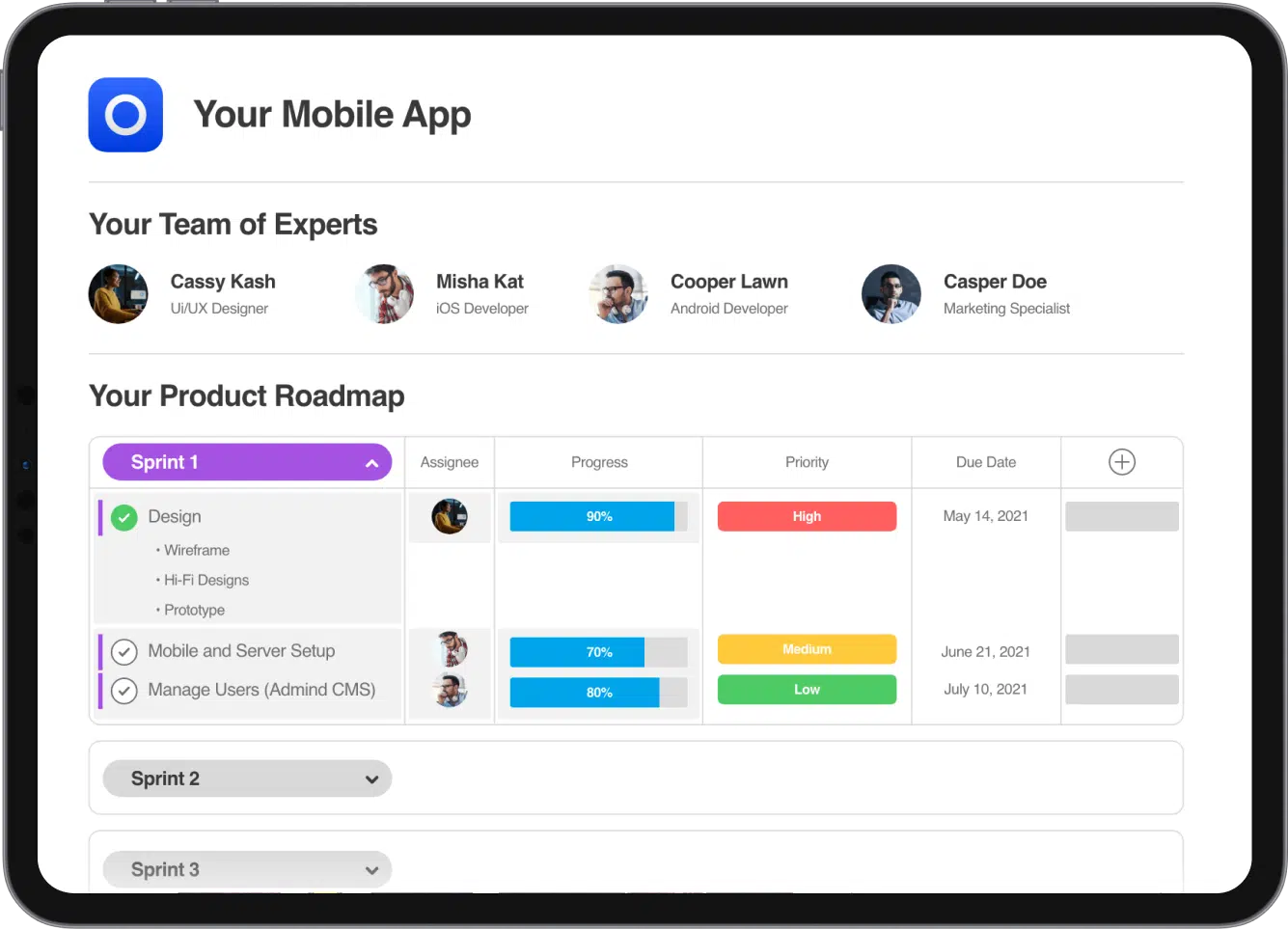
The Baseplate offers pre-built functionalities, allowing app developers to focus on creating unique features rather than getting bogged down in repetitive tasks. This approach saves time and enhances development, enabling more distinct app offerings.
Appetiser’s method is not just about speed—it’s about building with quality and strategic foresight. With over 10 million users and clients achieving significant valuations, the Baseplate lays a solid foundation for success.
Think of Appetiser Baseplate™ this way: Imagine launching a streaming video app with the same precision and reliability as producing a blockbuster movie. Just as a successful film relies on a solid script, talented cast, and skilled crew, creating a standout app demands a robust framework, innovative features, and seamless performance.
![]()
The Appetiser Baseplate™ acts as the script of your app’s development, providing a comprehensive blueprint ensuring every element works harmoniously.
9. Launch, promote, and enhance your streaming app
With your app developed and ready for the world, it’s time to focus on launching, promoting, and continuously improving it. The hard work isn’t over once your streaming video app is launched. Competition is growing tighter and tighter each day in video streaming services, so user engagement and satisfaction are critical for success.
Reality check: once it’s out there, the work—of you and your app development team—will continue.
Here’s what you need:
1. App store submission
Launching your app and submitting it to major app stores like Google Play and the Apple App Store is a critical step. Make sure you:
- 📣 Meet guidelines. Ensure your app strictly adheres to each platform’s guidelines. Google Play Store and Apple App Store have different requirements, so review them carefully.
- 📣 Test for bug-free release. Conduct thorough testing to eliminate bugs before submission. A buggy initial release can lead to negative app store reviews, harming your app’s reputation.
- 📣 Optimize listing. Create compelling app store listings with eye-catching icons, screenshots, and descriptions. Use App Store Optimization (ASO) techniques to improve visibility.
2. App marketing strategies
Effective promotion is key to getting your app noticed, so consider exploring organic and paid efforts:
- 📣 Social media marketing. Leverage platforms like Instagram, TikTok, and LinkedIn to showcase your app’s features and benefits.
- 📣 Influencer partnerships. Collaborate with influencers whose audience aligns with your target market. This can significantly boost your app’s credibility and reach.
- 📣 SEO and content marketing. Develop high-quality content that addresses user needs and incorporates relevant keywords to drive organic traffic.
- 📣 Paid advertising. Use platforms like Google Responsive Ads and Facebook Ads to target specific user segments and drive app installations.
- 📣 Promotional offers. Consider offering free trials or limited-time discounts to attract initial users and generate buzz.
3. User feedback and continuous improvement
User feedback is one of the best ways to get ideas for app improvements. You can start iterating by engaging with users and observing what they like (and dislike) about your app.
Here are some of the things you could do to make this process more efficient:
- Encourage reviews. Prompt satisfied users to leave positive reviews on app stores. Respond promptly to all feedback, both positive and negative.
- In-app feedback collection. Implement in-app surveys and feedback widgets to gather user opinions contextually.
- Analyze user data: Use mobile analytics tools to understand user behavior, identify pain points, and inform future updates.
- Regular updates. Based on user feedback and market trends, release regular updates to fix bugs, improve performance, and introduce new features.
- Community building. Create a user community through forums or social media groups to foster engagement and gather valuable insights.
![]()
Here’s my final thought for this step: App development is a continual journey, and adapting to user demands and market shifts is vital for sustained app growth and success. Embrace flexibility and evolve your streaming video content and app to meet changing expectations, ensuring it remains relevant and valuable.
Ready to build the next streaming app sensation with Appetiser Apps?
What if your streaming app lights up screens like the next big blockbuster, captivating audiences like Netflix?
At Appetiser, we’re here to turn your cinematic dreams into a reality, crafting an app that streams seamlessly and evolves with your viewers’ expectations.
With our Appetiser Baseplate™, your vision transforms into a flexible and scalable platform that keeps audiences coming back for more.
Ready to roll out the red carpet for your app’s premiere? Let’s connect and chart the course to success. Book your consultation today and let’s create the streaming sensation everyone will be talking about.
Your app’s star-studded journey starts here.
Special thanks to the following Appetiser Apps team members for contributing valuable insights: Michael MacRae (CEO and co-founder), Calvin Cica (Product Designer), Adonis Dumadapat (iOS Developer), and Brian Wong (Product Manager)
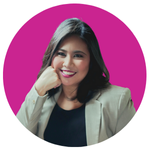
Maria Krisette Lim is a Content Marketing Specialist with 14 years of experience producing web and print ad content. Krisette has a BSBA degree, major in Business Management and Entrepreneurship. When she’s not tinkering with words and punctuation, she’s either curled up with a book while sipping hot tea, playing with her toddler, or tinkering with website builders.


